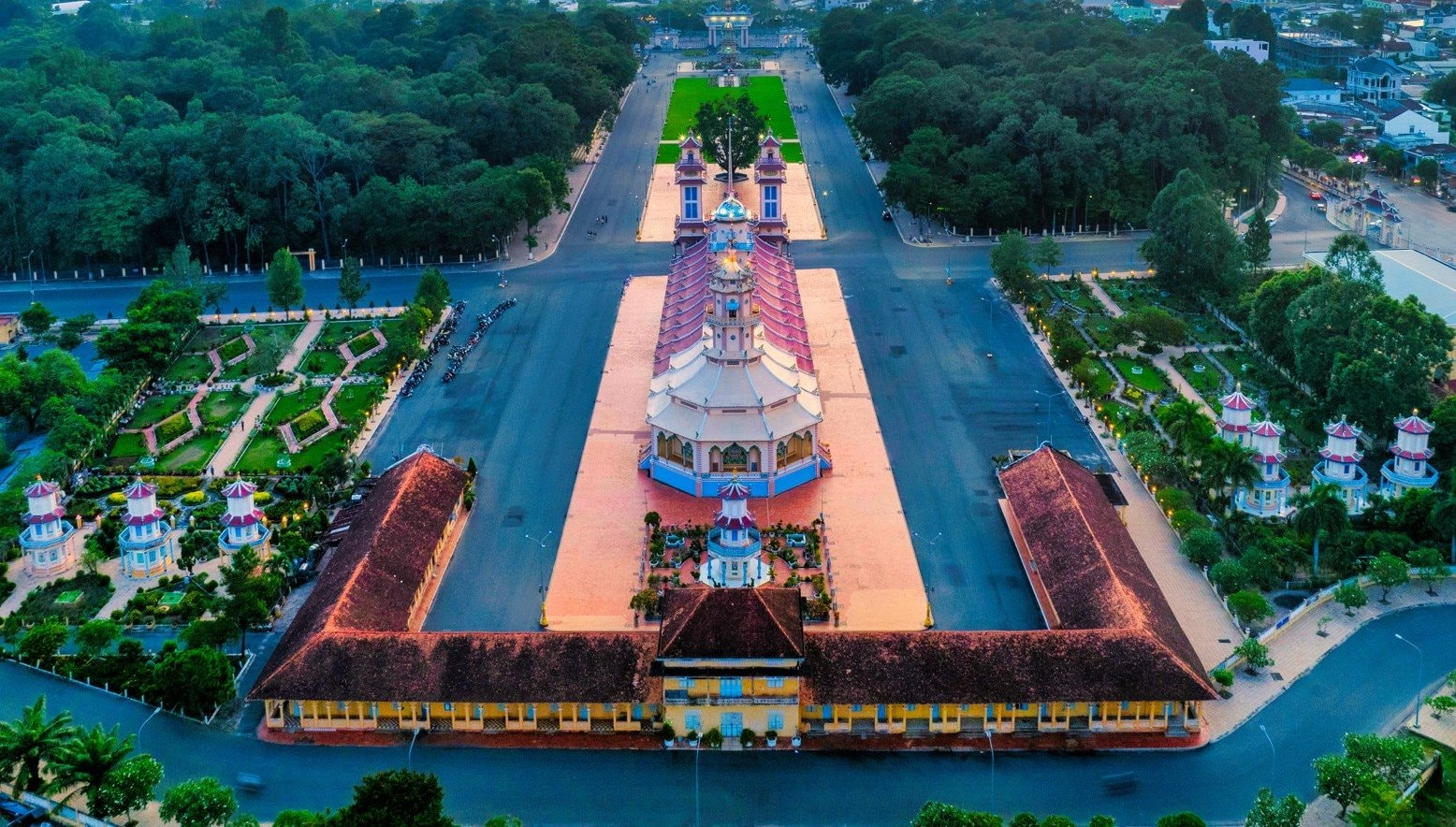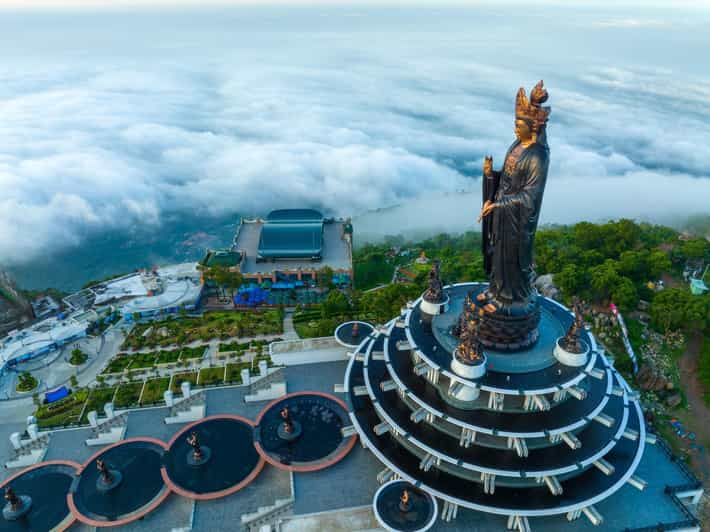Toa Thanh Tay Ninh Pagoda
1. Overview
Tòa Thánh Tây Ninh, known in English as the Tây Ninh Holy See, is the central temple and spiritual headquarters of Caodaism—a religion founded in Vietnam in the 1920s. This grand and colorful complex is both a place of worship and a remarkable architectural landmark. It attracts thousands of visitors each year, drawn by its unique beliefs, stunning structure, and peaceful ambiance.
2. Location
The temple is located in Long Hoa Ward, Hòa Thành Town, Tây Ninh Province, about 5 kilometers southeast of Tây Ninh City center and around 90 kilometers from Ho Chi Minh City. It is easily reachable by car or tour bus.
3. Architecture and Features
The Tây Ninh Holy See is an architectural masterpiece that blends Eastern and Western styles in an imaginative and symbolic way:
-
The main temple is nearly 100 meters long, with two high towers, a curved roof, and walls painted in bright pastel colors like yellow, pink, blue, and white.
-
The most iconic symbol is the Divine Eye (Thiên Nhãn), representing God watching over humanity. It appears prominently on the front façade and throughout the interior.
-
Inside the temple, rows of dragon-entwined columns, celestial murals, and statues of religious figures create a vibrant and sacred space.
-
The layout reflects Caodaism’s belief in harmony between religions, with altars dedicated to figures such as Buddha, Confucius, Jesus Christ, and Lao Tzu.
The Holy See is surrounded by spacious gardens, administrative buildings, and living quarters for clergy, forming a self-contained spiritual community.
4. Historical Significance
The construction of the Tây Ninh Holy See began in 1933 and was completed in 1955. It was designed according to divine instructions received through séances by the early Caodaist leaders. The site is considered the birthplace of Caodaism, a syncretic religion that combines elements of Buddhism, Taoism, Confucianism, Christianity, and Vietnamese spiritual traditions.
Tòa Thánh has been the center of Caodaism ever since, guiding millions of followers across Vietnam and abroad.
5. How to Visit
The Holy See is open daily, and visitors are welcome to observe the noontime mass ceremony, which is the most impressive part of the day. No entrance fee is required, but modest clothing is expected—long pants or skirts and covered shoulders.
Visitors can explore the temple grounds on their own or with a guide. There is also a small museum explaining the history and beliefs of Caodaism.
6. Experience and Meaning
A visit to the Tây Ninh Holy See is a one-of-a-kind cultural and spiritual experience. The colorful temple, serene environment, and sacred music during ceremonies give visitors a glimpse into one of Vietnam’s most fascinating religious traditions. It is a place of unity, peace, and respect among different faiths—an ideal stop for anyone interested in religion, architecture, or Vietnamese culture.



